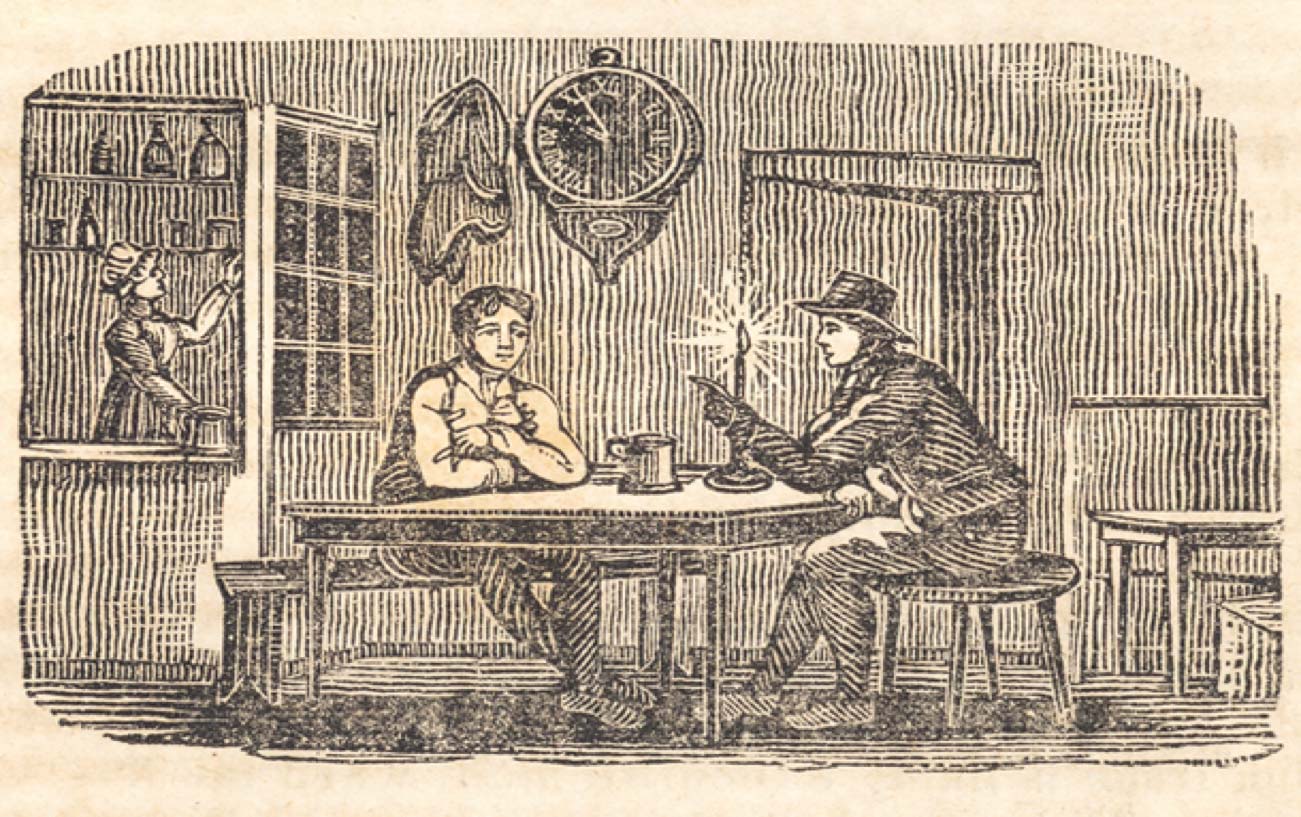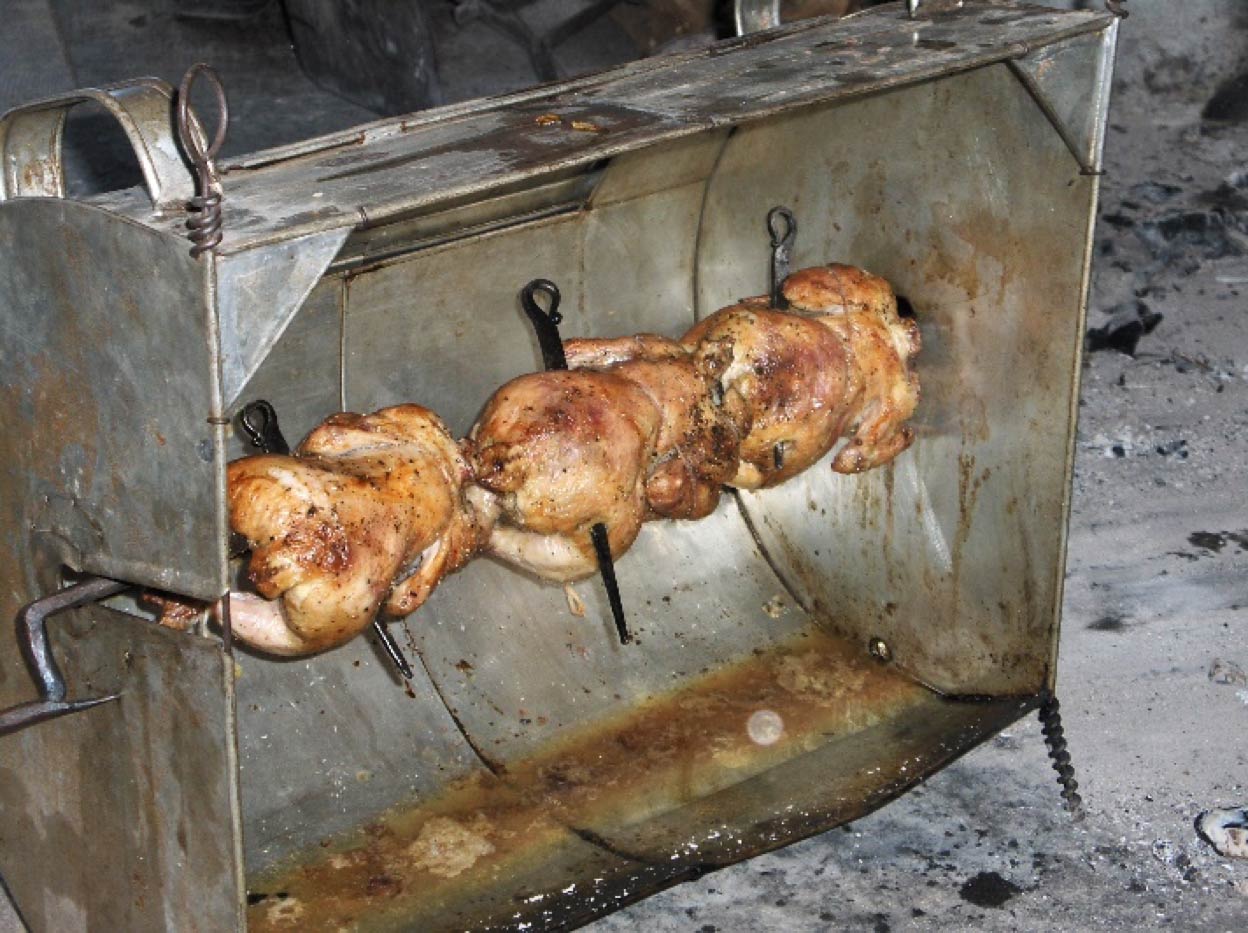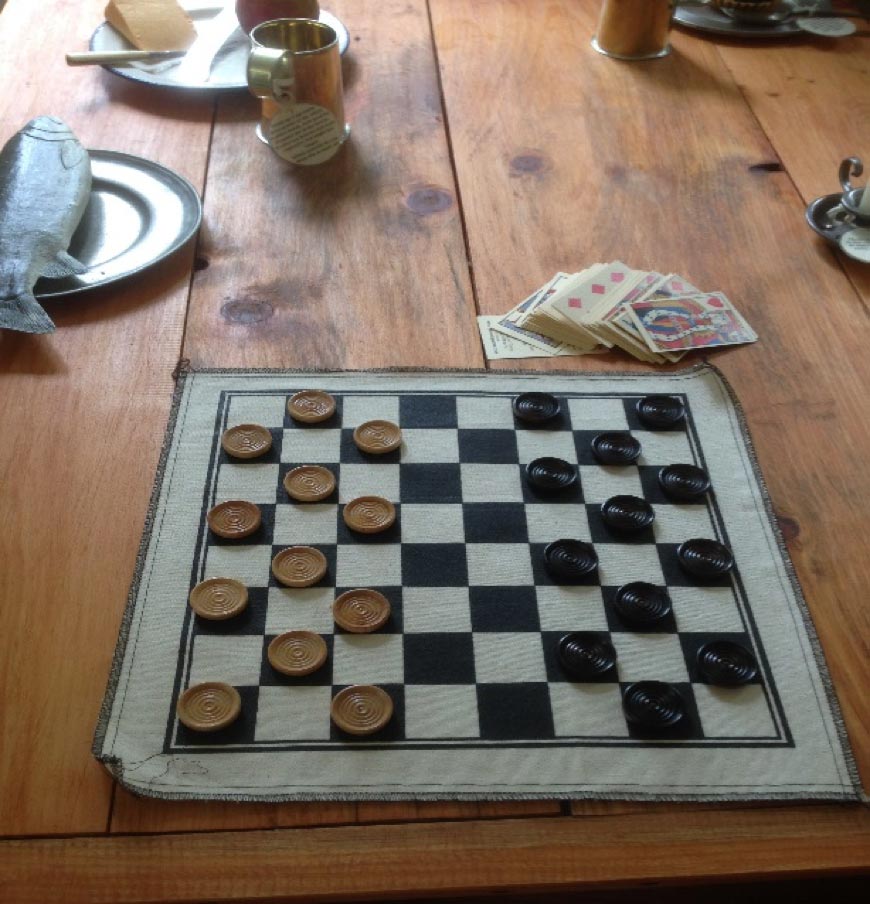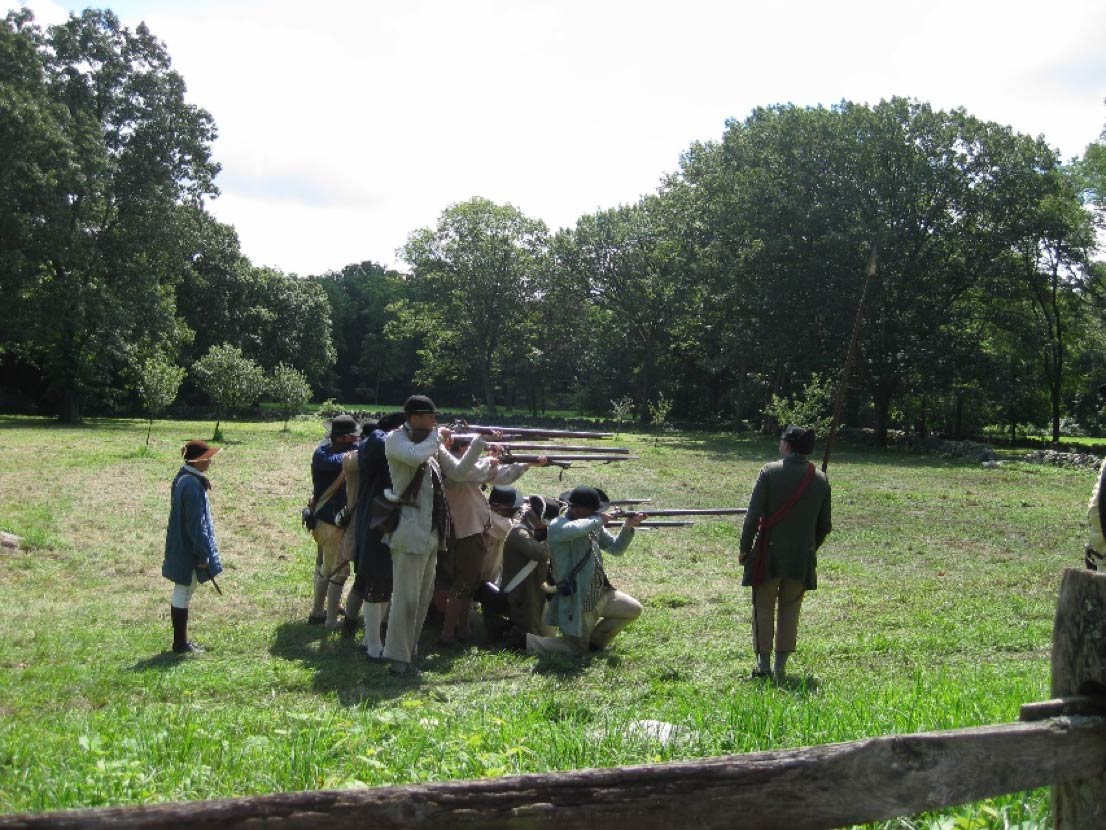About the Common Room
What is a common room?
The Common Room, or Dining Room, was the place where visitors at the tavern gathered to eat, drink, socialize, and conduct business. Local men gathered at taverns in the evening to enjoy the company of their friends, to play checkers or cards, smoke pipes, and to discuss politics. Travelers who were only staying at the tavern for a night or two would use this room as a place to eat their meals and to rest while they waited for the stage coach to arrive or for the weather to clear so that they could begin the next stage of their journey. Some larger taverns had two common areas; a parlor for ladies and gentlemen, and a louder, rowdier taproom for local men and other guests who enjoyed a casual, friendly place.
A Closer Look at the Painting
Look at all the people in the painting, and decide who would be going into the parlor for ladies and gentlemen, and who would choose to go into the livelier taproom instead.
Where did the people eat and what kinds of food were there?
Food and drinks were served in the common room. The main meal of the day, called “dinner”, was served at mid-day. Visitors would not usually order from a menu; instead they would be served whatever the cook decided to make that day. For dinner, this usually included a hot dish such as soup or stew, ham, or chicken pie. The evening meal was called “supper”, and usually consisted of cold food or leftovers. Some offerings might be bread & butter, cold meat, pickles, pie, or pounded cheese.
Apple cider, beer, coffee, and tea were the most common drinks served in taverns. Temperance taverns did not serve alcoholic beverages; they might offer hot chocolate instead.
A Closer Look at the Painting
If you were staying at this tavern, what would you hope to be offered for dinner? Make up a sample menu of the things that you would like to eat and drink.
What else did people do at the inn?
Local men gathered at taverns in the evening to enjoy the company of their friends, to play checkers or cards, smoke pipes, and to discuss politics.
After militia training days, men often gathered in the local tavern to eat and drink. These gatherings could become quite rowdy, causing other travelers to retire to the ladies parlor to get away from the celebration.
Sometimes men would use the tavern as a place to conduct business, perhaps meeting with someone who was looking for a job, or who was interested in buying or selling livestock. Town leaders might hold meetings at the tavern, and the Justice of the Peace sometimes used the tavern as a court room.
A Closer Look at the Painting
Look again at all the people in this painting. Some of them are with a sleighing party, but not everyone is. What are some of the other reasons that you can imagine might bring these people to the tavern? How do you imagine they will spend the evening?
How were inns helpful in getting the daily news?
In addition to eating and drinking, the common room served as an important gathering place where people could read the newspaper, learn about important local events, discuss politics, and hear the latest gossip about their neighbors. Taverns often served as the local post office, so this would be the place where members of the surrounding community came to send or receive mail.
Advertising posters, called broadsides, would often be displayed at taverns. These broadsides were a way of spreading the news to the large number of people who would be constantly coming in and out of the tavern. Posters might offer a reward for a lost horse or dog, advertise merchandise for sale at a local store, provide information about ships that were getting ready to sail, or promote an upcoming county fair.
A Closer Look at the Painting
Think of all the ways that people would share the news 150 years ago. How did they share information within their community? With another town? Across the ocean? How do we share information today?








Have a question or comment regarding SEE/change? Enter your email and comment here.
"*" indicates required fields